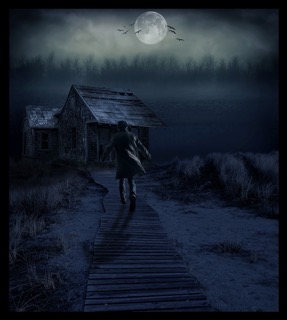There’s no question that a thriller novel is an exciting genre. But what makes it so thrilling? It’s the literary elements used to create suspense and tension. In this blog post, we will discuss the main literary elements found in thrillers. We’ll also examine how these elements work together to create a compelling story.
So, if you’re interested in writing a thriller novel or want to understand this popular genre better, this post is for you!
What are literary elements, and why are they necessary in a thriller novel?
Literary elements are the basic ingredients of a story—things like character, setting, plot, and theme.
Literary devices are the techniques writers use to bring those elements to life. Popular literary devices include characterization, foreshadowing, metaphors, irony, etc. Learn about each literary device and practice using them separately until you feel comfortable using them in your own story.
The plot is the sequence of events that make up the story. It’s what happens and how it happens. Setting is where and when the story takes place. Characters are who do what in the story. Point of view is from whose perspective the story is being told (first person, second person, or third person). And the theme is what the story is about.
The most important literary element is language. You can use language to create beautiful and lyrical passages or dark and suspenseful scenes. It can also convey a character’s thoughts and feelings or set the tone for a story.
Plot – what is it, and how do you create one that’s thrilling and suspenseful?
The plot is the backbone of a story. It’s what drives the action forward and keeps the reader engaged. In a thriller, the plot is often fast-paced and full of twists and turns.
A fast-paced, twisty plot is always a recipe for success in a good thriller or mystery novel.
You never know what will happen next, and the suspense keeps you turning the pages. A few well-placed plot twists can keep the reader guessing and make for an unpredictable story.
So if you’re looking to write a page-turner of your own, be sure to add plenty of fast-paced action and unexpected turns. The readers will love it!
To create a suspenseful story, start with a strong hook that will grab the reader’s attention from the beginning. Then, build up the tension and conflict until it reaches a boiling point. Finally, resolve the situation in a satisfying (or unexpected) way.
Examples of fast-paced, twisty plots in books and films
A good example is Gillian Flynn’s Gone Girl. The story revolves around a wife who goes missing and her husband, who becomes the prime suspect. The plot is full of twists and turns, and it’s hard to know who to trust.
Another good example is Paula Hawkins’ The Girl on the Train. This book is also full of suspense and centers around a woman who becomes obsessed with a couple she sees every day on her train ride into London.
Character development – what makes a good thriller protagonist, and how do you make your readers care about them?

An essential aspect of writing a thriller is creating believable characters. Your protagonist should be someone the reader can root for, even if they’re not perfect. Your characters should be relatable, and most importantly, they should be capable of handling the suspense and conflict you throw their way.
Creating a protagonist your readers will care about
Try to create complex characters with flaws and vulnerabilities. Showing your characters’ vulnerability will make readers feel more connected to them. Also, give them motivations and goals – something they’re fighting for.
One of the most important aspects of a believable character is relatability. When readers can easily see themselves in the story’s protagonist or any other character, they’re more likely to immerse themselves in the tale.
Believable characters don’t have to be likable, but they should feel natural. They should make mistakes, have flaws, and experience growth throughout the story. And above all, they should be authentic to who they are as individuals.
It’s essential to make sure that your characters are three-dimensional, which means giving them a backstory, showing their motivations, and letting the reader see their inner thoughts and feelings.
Your protagonist should be someone readers can root for, even if they’re not perfect. In addition, they need to be relatable and sympathetic so that readers will want to see them succeed.
Antagonists, on the other hand, should be people that readers love to hate. They need to be the ones that readers are hoping will fail miserably.
You should avoid cliches and stereotypes and ensure that your characters act in realistic ways. For example, a character who is always kind and helpful might seem out of place in a challenging situation, or someone who is always angry and hostile might not be very believable.
It’s also important to let your characters change over time; no one is static, so your characters should grow and learn from their experiences.
Setting – why is it so important to get the details right in a thriller novel, and how can you create an atmosphere of suspense and fear?

The setting of your thriller novel is important because it can help create an atmosphere of suspense and fear. Getting the details right is essential to make the story believable. Choose a setting unfamiliar to your readers or with a dark history.
Literary elements such as suspense, fear, and setting can make a story more believable and engaging
Foreshadowing can also increase the suspense and heighten the fear factor. For example, in the story Red Herring, by Laura McHugh, the reader is foreshadowed by the fact that something terrible will happen to the protagonist early on. This allows for a feeling of suspense throughout the story as the reader wonders what exactly will happen to her.
Also, the setting is well done in Red Herring, lending to a feeling of creepiness and dread. All of these literary elements work together to create a truly chilling tale.
Examples of scary settings
One example of a scary setting is an abandoned mental hospital. It’s spooky to think about all the patients who once walked these halls, and it’s easy to imagine all sorts of horrifying things happening in such a place.
Another example might be a dark, empty subway station late at night. There’s something eerie about being the only person in such an ample space.
A great example of a scary setting is the scene in the movie Jaws, where the shark is attacking people. It’s suspenseful and thrilling to watch, and it’s also quite scary.
Another good example is the movie The Blair Witch Project, which is set in the woods and features several scary scenes involving witches and ghosts.
Style – what makes writing a thriller different from any other genre, and how can you make your words work for you instead of against you?

When writing a thriller, keeping the pace and maintaining a sense of suspense is essential.
You can use short sentences, active voice, and action verbs to make your writing more exciting
Such literary devices also make it easier for readers to follow along.
Another way to keep readers interested is to avoid info dumps. Instead, sprinkle information throughout the story in small doses. This will help keep readers engaged and make the story more interesting.
And, of course, don’t forget the suspense. Thrillers are all about keeping the reader on the edge of their seat. To do this, you must ramp up the tension throughout your novel. Drop hints about what’s to come and keep your readers guessing.
How the use of suspense, tension, and hints can create an exciting or intriguing plot
Suspense is the technique of deliberately building anticipation and anxiety in the reader by introducing clues but not revealing all the answers. This creates a sense of curiosity and makes the reader want to continue reading to discover what happens next.
Tension: Tension is created by putting characters in difficult or dangerous situations where there is doubt about whether they will succeed or survive. This builds excitement and makes readers anxious to see what happens next.
Hints: Hints are small pieces of information that are revealed slowly over time, often through dialogue or action. This allows readers to figure out the puzzle and keeps them engaged in the story.
Suspending disbelief is key to maintaining the tension throughout the novel. By providing hints of what is to come, you can keep readers guessing until the end.
Theme – What message or lesson do you want your readers to take away from your story, and how can you embed it into the plot without being too preachy or heavy-handed?”

What message or lesson do you want your readers to take away from your story? Literary elements are the key to a great story. So don’t be afraid to use them!
When trying to decide on a story’s theme, it can be helpful to ask yourself questions like these:
What is the story really about?
What is the character’s main conflict or challenge?
What are the most important lessons the character learns throughout the story?
What does the ending of the story imply about the theme?
By answering these questions, you should better understand what themes your story might explore.
Conclusion
If you want to write a thriller novel that will keep your readers on the edge of their seats, you need to understand common literary elements and how to use them effectively. For example, your plot should be well-crafted and full of twists and turns, your characters must be compelling and relatable, and your setting should be vividly realized.
With careful planning and attention to detail, you can create a thrilling story that will keep your readers entertained from beginning to end.
I hope this has been helpful!
If you’re working on your first novel and are looking for more help with your writing, please check out my other articles at https://ullahakanson.com/blog/
Thanks for reading!
Ulla

